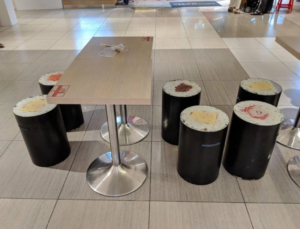While reading, I noticed that the author was creating a symbiosis between the design’s appearance, utility, and the emotional response associated with it. It was interesting to see how the author defined the balance between these aspects, and I believe it is a healthy way for them to exist. I have always thought that utility should take precedence over design, which I believe is a practical approach. However, the author appears to infer that good effects in design can improve usability and problem solving. Although I believe in the value of good design, here’s another perspective: if we have a problem and are designing a tool to help us solve it, why go the extra mile to make it attractive or visually appealing? While answering this question, I came to the conclusion that an aesthetically pleasing design is the result of properly implementing all of the necessary functionality in the tool.
I think it can be best explained with the modern kitchen designs. Consider the trend of open-plan kitchens that blend effortlessly with living spaces. This design choice is not purely aesthetic; it stems from the functionality of wanting a kitchen that supports not just cooking, but also social interaction and entertainment. The central kitchen island often serves multiple purposes: it is a prep area, a dining table, and a social hub, all in one. Its design—sleek, with clean lines and often featuring visually appealing materials like marble or polished wood—enhances the kitchen’s utility by making it a more inviting space. The aesthetics of the island, from its material to its positioning, are integrated with its function, creating a space that is both beautiful and highly functional. By contemplating this — approach to kitchen design, I mean that aesthetics and utility go hand in hand.
Thinking about the document’s ideas in a broader context, I’m drawn to look into how they relate to digital interfaces and even services. In a society increasingly mediated by screens, the emotional impact of design aesthetics on usability is even more important. I’ve experienced websites and apps whose gorgeous design increased my patience while navigating difficult functionality. This notion is supported by the document’s explanation that ‘Positive affect broadens the thought processes making it more easily distractible,’ which validates my experiences with digital interfaces. The emotional impact of design aesthetics on usability is critical, especially in our increasingly screen-mediated society. However, the document’s emphasis on the universal benefits of good effect in design fails to account for individual and cultural variations in aesthetic tastes. This error makes me think about the worldwide nature of design work nowadays. Products and interfaces developed in one cultural context may not elicit the same emotional responses in another, thereby affecting usability across user groups. This intricacy adds to the difficulty of attaining truly universal design—a goal that appears to be becoming increasingly relevant in our interconnected society.
Now about Margaret Hamilton, I believe her story shows how individual determination and intellectual bravery can redefine the possible, even against the backdrop of societal and professional norms. In a time when the professional landscape marked differently for women, bringing her daughter to work at the MIT lab is a powerful moment. It shows us how she balanced being a mom and working on the Apollo missions at a time when most people didn’t expect women to do such jobs. This story is special because it’s about more than just making software for the moon landing. It’s also about Hamilton showing that women can be both caring mothers and brilliant scientists. She didn’t let the rules of her time stop her from doing great things in technology. It also made me think about how personal life and big achievements can mix together. Hamilton’s story is really inspiring because it shows that, how anyone can break barriers and make a big difference, no matter what others might expect.



